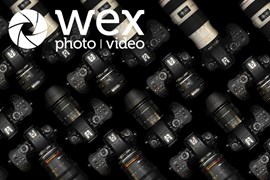
Affordable cameras are back, baby. While it currently feels harder than ever these days to muster up the spare cash for our hobbies, the good news is that if you want to buy a camera for a knockdown price, you arguably have more choice right now than you did even a few years ago.
Photography and video can be expensive pursuits – I’m not about to sit here and pretend that a new Sony A9 III is not a costly purchase. Of course it is. However, the vast majority of us do not need a professional tool as sophisticated as the A9 III, and for those who are shooting at a more amateur end of the scale, there are more options right now when it comes to cheap cameras than I can remember there being in a good long while.
Don’t believe me? Let’s take a closer look – and find out why 2024 is shaping up to be the year of the affordable camera comeback…
Stay in your lane
One way manufacturers are being quite canny is in recognising that a way to offer a cheaper camera is to make it a specialist. Professional cameras these days generally need to do everything really well. There’s a reason why the Nikon Z9, for example, offers high-resolution images, blistering burst rates and 8K video – because professionals are increasingly expected to be jacks of all trades.
But amateurs aren’t, and many people’s interests in shooting photos or videos run along quite specific lines. As such, there’s a market for cameras that do one particular thing really well, for an affordable price. Take the Canon PowerShot Zoom – a camera that’s essentially a big stabilised zoom lens in a small, pocketable form factor. It’s absolutely perfect for birders and wildlife enthusiasts, and it’s substantially cheaper than an all-rounder camera with an equivalent telephoto lens.
Or take the Canon PowerShot V10, a clever little free-standing camera that’s specifically optimised for vlogging, with a 19mm equivalent lens, a 3.5mm mini jack, a flip-around screen and a form factor that’s comfortable to hold one-handed. It’s not much cop for taking pictures of birds, for the same reason that the PowerShot Zoom isn’t particularly good for vlogging, which is the same reason that an umbrella isn’t much use for de-seeding a pomegranate. Because it’s a specialised tool, and it doesn’t need to be!
Not every camera needs to be a Swiss Army Knife, and it’s great to give consumers the option not to pay for features they’re not going to use.
Beginner’s luck
We’re increasingly seeing excellent cheap options for beginners in mirrorless camera systems. I have to give particular props to Canon here, as the manufacturer is offering a number of affordable on-ramps to its flagship EOS R series. The Canon EOS R100 is currently one of the cheapest new mirrorless cameras on the market, and is a worthy successor to the beginner DSLRs that were once a staple of every college photography course.
There was a time when it seemed the era of the cheap compact camera had come to an end. However, Kodak licensee JK Imaging has shown there’s life in the idea yet with its new PixPro range of ultra-affordable cameras. Having launched in 2023, the range includes compacts in various different form factors – many of which offer something compellingly different from a smartphone. For instance, there’s the superzoom Kodak Pixpro AZ255, or the ultra-tough, waterproof Kodak Pixpro WPZ2.
Going old-school
Another thing that’s great to see is when manufacturers keep an older camera available and in production – often at a substantially discounted price. The tech industry is infamous for the voracity with which it discontinues and replaces current products with new versions, which are often hardly what you’d call radical leaps forward. Is smartphone technology truly advancing at a fast enough pace to justify a new model of iPhone every single September? I submit to you that it is not. (This practice always makes me think of the episode of Red Dwarf where Kryten the android is informed that he has reached his planned expiry date, whereupon his replacement model shows up with a shotgun and tries to kill him).
A camera I often recommend to anyone who’ll listen is the Panasonic Lumix G7. This mirrorless model will be celebrating its ninth birthday this year, and can still be bought brand new, with a 14-42mm lens, for just £479. For that, you get a fast and capable camera that’s great for travel, with a free-angle LCD screen, 8fps burst shooting and 4K video – as well as access to the huge range of Micro Four Thirds lenses. Sony is good for this too, offering significant discounts on cameras like the mirrorless A6100, which is now five years old.
This is also true for action cameras. The famous GoPro series of Hero cameras is currently on its twelfth iteration – but did you know you can pick up the GoPro Hero 10 Black for just £249, a triple-digit discount from launch price? Or even save yourself another tenner and nab DJI’s last generation of action camera, the Osmo Action 3? It’s great to see manufacturers offering these kinds of discounts on older models, even while continuing to develop new products, and it makes photography and video that much more accessible for more people.
Future wishlist
Long may trends like these continue! Of course, there’s plenty more work I’d like to see from manufacturers when it comes to offering affordable options. I’d love for Fujifilm to get back into releasing slimmed-down, cheaper versions of its flagship cameras. We had the X-T30 (and X-T30 II) as a counterpart to the X-T3, so how about an X-T50 for the X-T5? Well, since writing this, Fujifilm granted my wish for the X-T50. It may be on the upper end of affordable cameras but nevertheless, I called it.
Some more beginner cameras for the Nikon Z mirrorless series would be no bad thing either – the cheapest model is currently the Z30, which is really a vlogger-focused option. A super-affordable route for photographers into the Z system would be great to see.
Remember, there are always ways to save money on camera gear. The used camera market is a fantastic place for bargains, and it’s worth keeping a regular eye out for limited-time discounts and deals. As 2024 unfolds, I’m optimistic we’ll see the release of plenty more cameras designed for the budget-conscious shooter.
About the Author
Jon Stapley is a London-based freelance writer and journalist who covers photography, art and technology. When not writing about cameras, Jon is a keen photographer who captures the world using his Olympus XA2. His creativity extends to works of fiction and other creative writing, all of which can be found on his website www.jonstapley.com
Buying Guides




